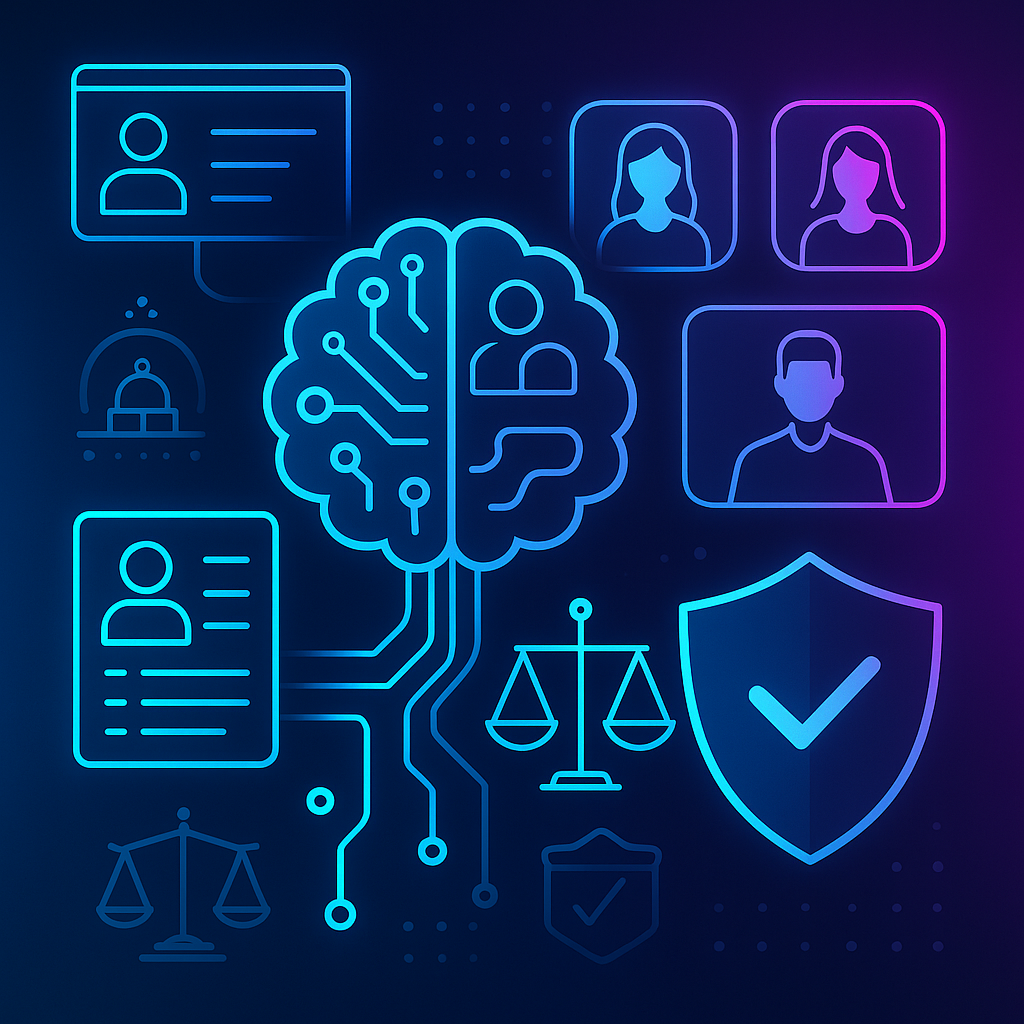Strategies to Reduce Time to Hire in Enterprises

‘Time to hire’ is a measure of the duration between a candidate’s first contact with a company and the final acceptance of a job offer. It is a critical metric that defines the speed and efficiency of hiring processes in large enterprises aiming to attract top talent.
The benefits of reducing time to hire include enhancing recruitment competency and improving the overall candidate experience. Streamlining this process helps organizations secure the best candidates before they are snapped up by competitors. A shorter time to hire can also reduce recruitment costs by minimizing the resources spent on prolonged hiring activities.
Let’s explore and understand the strategies and technologies that can be leveraged to enhance recruitment efficiency in large organizations.
What is ‘Time to Hire’?
To reiterate, time to hire refers to the number of days it takes for a candidate to be processed, evaluated, and accepted for a role. It is a vital metric that speaks to the efficiency of the recruitment process and helps identify areas for improvement. A comprehensive understanding of time to hire helps enterprises streamline their hiring practices and ensure swift talent acquisition.
Let’s now clarify the distinction between time to hire and ‘time to fill’.
Time to fill refers to the period between the advertising of a job vacancy and the acceptance of a job offer. This metric encompasses the entire recruitment process – from job posting and sourcing to interviewing and hiring finalization. Time to hire, on the other hand, focuses explicitly on the candidate’s journey from initial contact to job acceptance.
Industry Benchmarks for Time to Hire
Benchmarking time to hire provides valuable insights into recruitment performance across various industries.
For instance, the average time to hire in the tech sector is approximately 30 days – a comparatively longer period commensurate with the specialized skills and qualifications involved. Roles in the retail industry typically have a shorter time to hire, in contrast, averaging around 20 days. That is due to the higher volume of applicants and the less specialized nature of work.
Key Metrics to Track
Besides time to hire, enterprises must keep track of multiple metrics that measure various outcomes of the hiring processes.
For instance:
- Cost per hire: The total cost of acquiring a new employee.
- Quality of hire: The value a new employee brings to an enterprise, calculated on the basis of productivity KPIs.
- Selection ratio: The number of candidates hired compared to the total number of applicants.
- Candidate diversity: A measure of representation and inclusivity in the pool of hired candidates.
Candidate experience: A measure of how candidates perceive the hiring and onboarding process using candidate experience surveys.
Why Should Time to Hire be Reduced?
A reduced time to hire offers several benefits that can significantly impact the hiring efficiency and overall success of an enterprise.
Enhanced Candidate Experience
A reduced time to hire enhances the candidate experience by conveying respect for their time and maintaining their engagement throughout the process. Top candidates in any field often have multiple offers in competitive job markets. A streamlined recruitment process ensures these candidates remain interested in your offer and view your organization favorably.
Speeding up the hiring process keeps candidates informed and engaged and helps maintain a positive employer brand.
Cost Efficiency
Cost efficiency involves optimizing the hiring process to reduce associated costs, such as advertising expenses and HR labor. A more efficient recruitment process means less time and money spent on prolonged candidate searches and administrative tasks. Enterprises can aim for higher cost efficiency by reducing hiring time, streamlining the recruitment process, and achieving better financial outcomes.
Access to Top Talent
A quick hiring process ensures high-quality candidates are captured before they accept offers from the competition. This is particularly important in industries where top talent is scarce because they require highly specialized skills and education, such as technology and healthcare.
Boosted Productivity
Filling vacancies faster prevents project delays and reduces the burden on current staff. This helps maintain operational efficiency, enhances team morale, and results in boosted productivity. When positions are left vacant for too long, existing employees may experience burnout from handling extra workloads. Optimized recruiting efficiency ensures teams remain productive and focused on their core responsibilities.
Decreased Risk of Candidate Loss
A streamlined hiring process reduces the risk of losing candidates to other opportunities. In a fast-moving job market, top candidates are in high demand and may not wait long for an offer. By reducing time to hire, enterprises can secure these candidates before they move on to other prospects and minimize the risk of losing valuable talent.
Challenges in Reducing Time to Hire
Reducing time to hire can be challenging for a wide range of issues, both internal and external. Identifying and addressing these issues is crucial for improving recruitment efficiency.
Some of the common bottlenecks in the recruitment process include:
- Inadequate Job Descriptions: Clear and detailed job descriptions are essential for attracting suitable candidates. Vague or overly broad descriptions can lead to an influx of unqualified applicants, which extends the screening and selection process. Ensuring job descriptions are precise and aligned with the specific requirements of a role can significantly reduce time to hire.
- Lengthy Approval Processes: Internal approval processes often delay hiring decisions. Multiple layers of approval and lengthy decision-making timelines can extend the recruitment cycle. Streamlining these processes by setting clear guidelines and delegating decision-making authority can help reduce time to hire.
- Complex Interview Scheduling: Coordinating interviews between candidates and multiple stakeholders can be time-consuming. Scheduling conflicts and back-and-forth communications often lead to delays. Utilizing automated scheduling tools can simplify this process and reduce scheduling time, thereby decreasing the overall time to hire.
- Poor Communication: Effective communication between HR, hiring managers, and candidates is critical. Delays in communication can slow down the hiring process and lead to candidates dropping off. Implementing a centralized communication platform can ensure timely updates and maintain candidate engagement throughout the recruitment process.
Inadequate Use of Technology: Leveraging advanced recruitment technologies, such as AI-driven applicant tracking systems (ATS) and automated screening tools, can streamline various aspects of the hiring process. Failure to utilize these technologies can result in inefficiencies and prolonged hiring timelines. Investing in the right technology can significantly reduce time to hire.
Challenges in Large-Scale Operations
The challenges listed above are often magnified due to high applicant volumes and complexities in the recruitment process typical in large-scale operations. Large enterprises usually have multiple departments involved in recruitment and layers of management, which can complicate decision-making and coordination. A high volume of applicants can also overwhelm traditional recruitment processes, leading to delays and inefficiencies.
Here are a few proven strategies to overcome the challenges associated with reducing time to hire in large enterprises:
- Enhance Job Descriptions: Collaborate with hiring managers to create detailed and accurate job descriptions that clearly outline the responsibilities and qualifications pertinent to a role.
- Streamline Approval Processes: Simplify approval workflows by establishing clear guidelines and empowering hiring managers to make timely decisions.
- Automate Interview Scheduling: Implement automated scheduling tools to eliminate manual coordination, streamline interview process, and reduce delays.
- Improve Communication: Use centralized communication platforms to ensure consistent and timely updates between all stakeholders.
Leverage Advanced Technology: Invest in AI-driven ATS and other recruitment technologies to automate and optimize various stages of the hiring process.
Leveraging Technology to Streamline Recruitment
Advanced recruitment technology is key to automating and optimizing the recruitment process. Tools like Leoforce by Leoforce transform how organizations attract, screen, and hire candidates. Companies can enhance their recruitment efficiency and significantly reduce time to hire by utilizing AI recruitment software.
AI recruitment tools automate the initial screening process, which traditionally consumes a significant amount of time and resources. These tools quickly parse through resumes, extract relevant information, and identify candidates who meet specified criteria. Automated screening ensures that only the most qualified candidates progress to the next stage.
AI-driven candidate matching utilizes sophisticated algorithms to evaluate candidates based on multiple dimensions, including skills, experience, and cultural fit. Leoforce by Leoforce, for example, leverages machine learning (ML) to match candidates to job requirements more accurately and efficiently than traditional methods.
Integration with existing HR systems is crucial for a seamless recruitment process. AI recruitment tools like Leoforce can easily integrate with ATS and other HR software to create a unified platform for managing recruitment activities. This integration allows for real-time data sharing and streamlined workflows that further enhance recruitment efficiency.
Enhancing Candidate Sourcing
A multi-channel candidate sourcing strategy is essential for accessing a wider talent pool. Leveraging multiple platforms such as job boards, social media, and professional networks is key to attracting diverse candidates. AI recruitment tools enhance this strategy by identifying the most effective sourcing channels and optimizing job postings.
AI-powered tools are also efficient in identifying potential candidates who may not be actively looking for a job but possess the required skills and experience. Organizations can tap into passive talent pools and connect with high-quality candidates who might otherwise be overlooked by using AI.
This capability significantly improves sourcing channel efficiency and accelerates the recruitment process.
Optimizing the Screening Process
AI resume screening can swiftly analyze resumes, extract pertinent details, and categorize candidates based on their qualifications. Automated parsing eliminates manual data entry, reduces errors, and speeds up the initial screening process while reducing time to hire.
AI-enhanced candidate assessments provide deeper insights into an applicant’s suitability for a role. These assessments can include skill tests, personality questionnaires, and cultural fit analyses. AI can predict candidate performance and potential more accurately by evaluating these factors and ensuring that only the best candidates proceed to the interview stage.
Improving Interview Scheduling
Automated interview scheduling tools can significantly streamline the overall hiring process by integrating calendars and providing real-time availability. This eliminates the back-and-forth typically associated with setting up interviews.
Tools like Calendly and similar platforms allow recruiters to send candidates scheduling links with which they can choose suitable time slots instantly. This automation reduces delays and ensures that interviews are set up quickly and efficiently.
Accelerating Decision Making
Real-time data and analytics play a critical role in speeding up hiring decisions. AI and machine learning technologies can provide predictive insights that aid in making faster, more informed decisions. These technologies can evaluate candidate qualifications, predict job performance, and even assess cultural fit, allowing recruiters to identify the best candidates swiftly.
Build a Talent Pipeline Ahead of Time
Proactive recruitment strategies are essential for maintaining a robust talent pipeline, which can significantly facilitate quicker hiring when positions open. Building a talent pipeline involves identifying and engaging potential candidates before a vacancy arises. It ensures a pool of qualified candidates is ready when needed.
This approach reduces the time spent on sourcing candidates and speeds up hiring. Maintaining a talent pipeline also enhances recruiting efficiency by ensuring the organization is always prepared to fill critical roles quickly and effectively.
Improve Your Careers Page
A well-designed careers page can significantly enhance applicant interest and fit by providing a clear and engaging view of the company culture, values, and available opportunities. A compelling careers page must include detailed job descriptions, employee testimonials, and company work environment insights.
An optimized careers page can improve the effectiveness of external recruitment efforts and attract top talent who resonate with the company’s values and mission by showcasing the organization’s culture and benefits.
Improve Your Job Listings
Clear and detailed job descriptions that communicate expectations and qualifications help attract the right talent. Best practices for optimizing job listings include using precise language, avoiding jargon, and highlighting key responsibilities and requirements.
Job listings must also emphasize the unique aspects of a role and the organization to stand out to potential candidates. Organizations can significantly reduce the time spent screening unsuitable candidates and speed up the hiring process by improving job listings.
Continuous Process Improvement
Continuous process improvement involves the ongoing monitoring and analysis of recruitment processes to identify inefficiencies and implement necessary improvements. Organizations can streamline the recruitment process and adopt effective hiring solutions by creating feedback loops and leveraging data analytics.
Regularly monitoring recruitment metrics is essential for understanding the performance of your hiring processes. As discussed above, tracking key metrics such as time to hire, cost per hire, and candidate satisfaction provides valuable insights into where the process works well and where it needs improvement.
Establishing feedback loops with candidates and internal stakeholders is equally crucial for continuous improvement. Candidate feedback can reveal pain points in the recruitment process, such as lengthy application procedures or poor communication. Similarly, input from hiring managers and HR personnel can highlight internal inefficiencies and streamline hiring solutions.
Utilizing data analytics is vital in identifying trends and making informed decisions about recruitment strategies. Advanced analytics can uncover patterns in candidate sourcing, application drop-off points, and interview scheduling delays.
Once inefficiencies are identified, it is essential to implement solutions promptly and monitor their impact. That might involve adopting new technologies, refining recruitment workflows, or providing additional training to recruitment teams.
Continuous improvement is an iterative process that calls for regular reassessment and adjustment to ensure the recruitment process remains efficient and effective.
Streamlining Recruitment for Strategic Advantage
Reducing the time to hire is essential for enterprises aiming to enhance their recruitment efficiency and secure top talent quickly. Organizations can significantly reduce time to hire by implementing strategies such as improving interview scheduling, leveraging AI recruitment tools, and maintaining a robust talent pipeline.
Leveraging technology is a critical step in this process. AI recruitment tools like Leoforce by Leoforce automate and optimize various stages of the hiring process, from candidate sourcing to screening and matching.
Streamline Your Recruitment with Leoforce by Leoforce
Leoforce by Leoforce offers robust solutions to streamline recruitment, enhance candidate matching, and improve hiring efficiency. Discover how Leoforce can transform your recruitment strategy and help you secure top talent efficiently.
Request a demo today!
Resources:
- https://www.revelo.com/blog/time-to-hire
- https://www.cnaint.com/news/cna-international/the-role-of-ai-in-candidate-engagement-cna-international/
- https://calendly.com/





